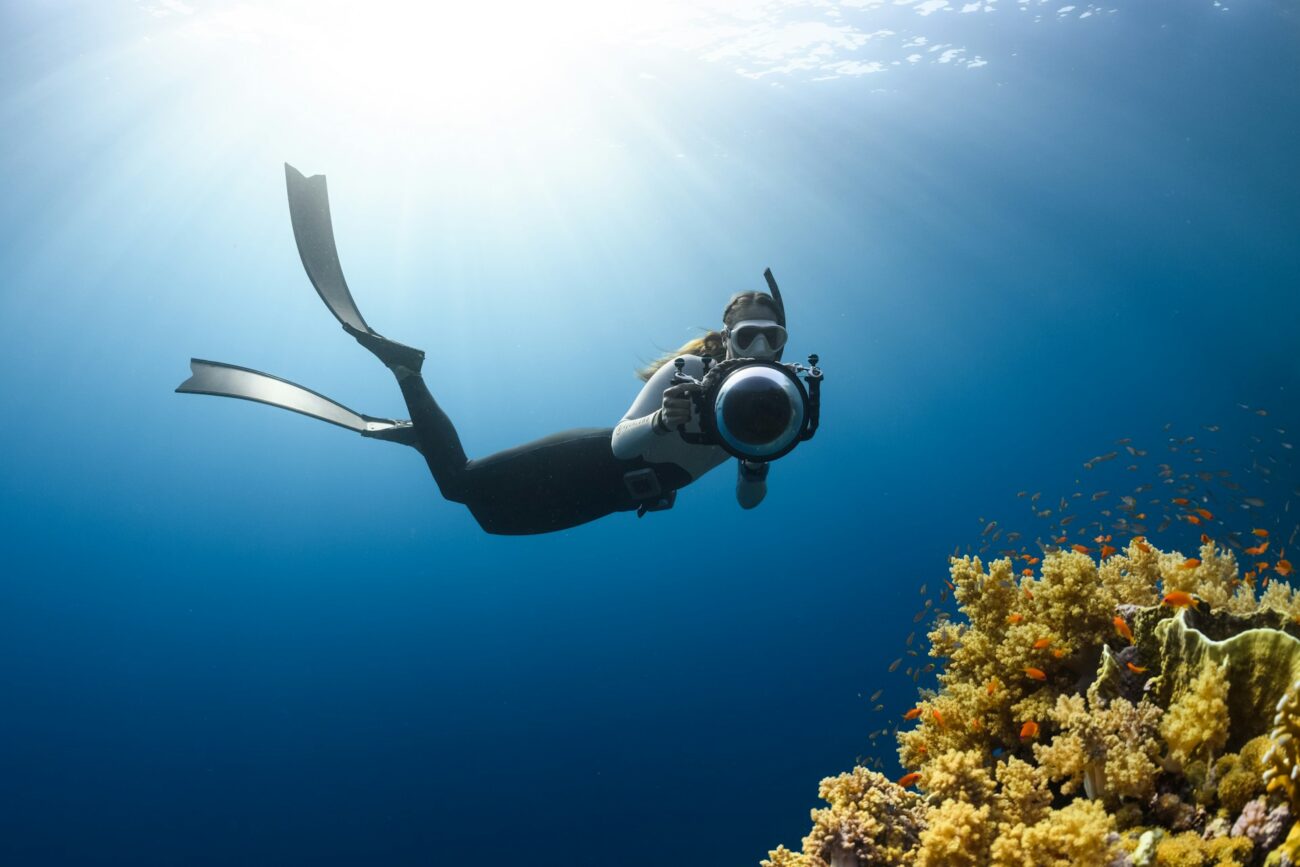Water adventures provide some of the most exhilarating ways to connect with wildlife in their natural habitats. From the gentle ripples created by dolphins swimming alongside your kayak to the adrenaline rush of navigating white water rapids while spotting riverside creatures, water-based wildlife encounters offer unique perspectives impossible to experience on land. These adventures combine the tranquility of nature with the excitement of close wildlife encounters, creating memories that last a lifetime. Whether you’re an experienced paddler or a curious beginner, numerous destinations worldwide offer spectacular opportunities to witness magnificent creatures while enjoying the thrill of being on the water.
The Magic of Marine Wildlife Encounters
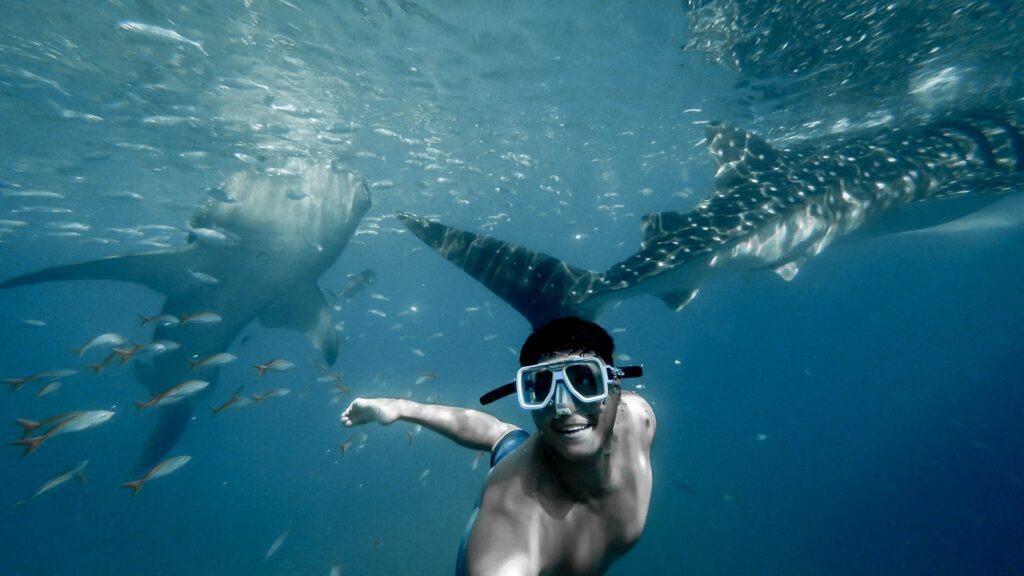
There’s something profoundly moving about sharing the water with wild marine creatures. Unlike zoo or aquarium experiences, encountering wildlife in their natural environment allows you to observe authentic behaviors and social interactions. The gentle splash of a dolphin’s tail or the sudden breach of a whale creates an intimate connection between humans and marine life that can transform perspectives and deepen appreciation for aquatic ecosystems. These encounters often become watershed moments in people’s lives, inspiring conservation mindsets and environmental stewardship. The unpredictability of wildlife sightings adds an element of anticipation and wonder that manufactured experiences simply cannot replicate.
Dolphin Kayaking in Monterey Bay, California
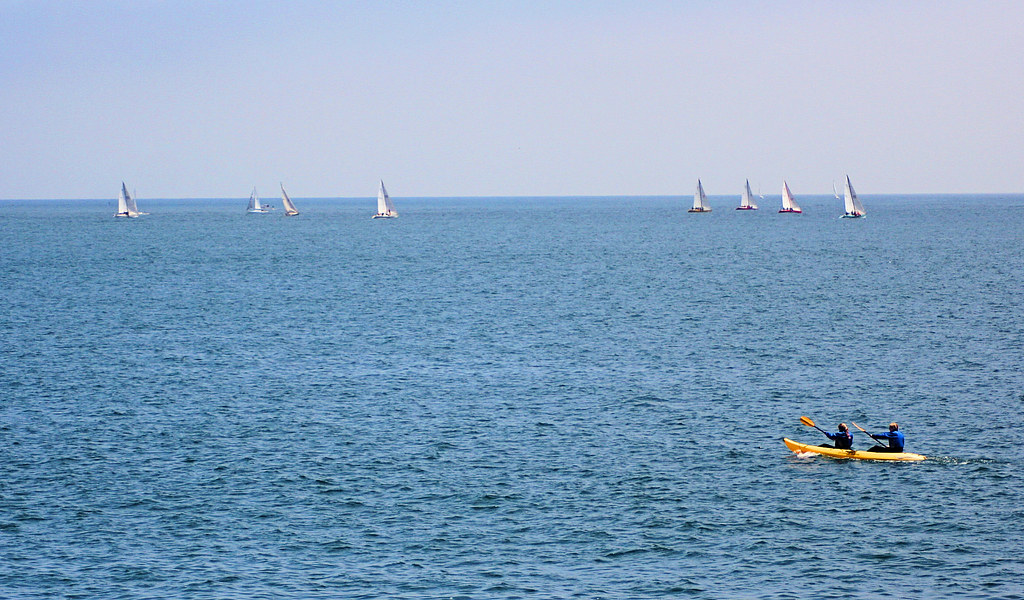
Monterey Bay stands as one of North America’s premier destinations for dolphin encounters, with its protected marine sanctuary hosting several species including Pacific white-sided dolphins, Risso’s dolphins, and the playful common dolphin. Kayakers regularly report dolphins approaching their vessels, seemingly as curious about humans as we are about them. The bay’s rich ecosystem, fed by deep submarine canyons, attracts abundant marine life year-round, making successful wildlife sightings highly likely. Early morning paddles offer the calmest water conditions and often the most active dolphin populations, with local outfitters providing guided tours that emphasize responsible wildlife viewing practices and marine conservation education.
The Bioluminescent Bays of Puerto Rico
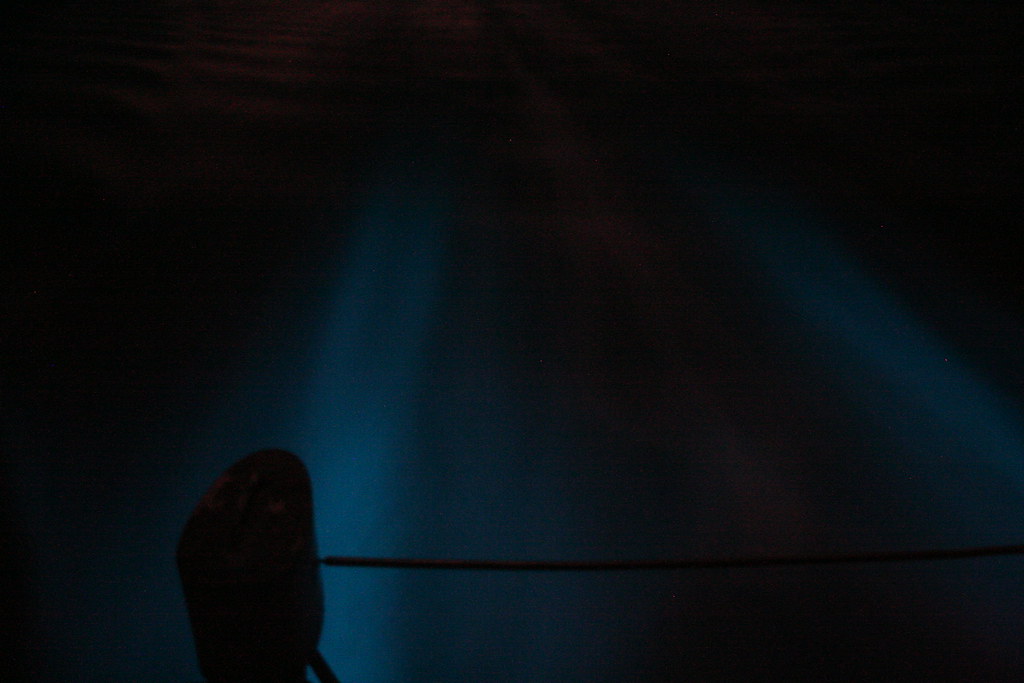
Puerto Rico’s bioluminescent bays offer a magical nighttime paddling experience where wildlife encounters take on an otherworldly glow. These rare ecosystems contain microorganisms called dinoflagellates that emit a blue light when disturbed, causing kayak paddles to leave glowing trails through the dark water. Mosquito Bay on Vieques Island is considered the brightest bioluminescent bay in the world, where kayakers can witness fish swimming beneath their boats outlined in ethereal blue light. The new moon phase provides the darkest skies and most vibrant bioluminescent experience, making advance reservations essential during these peak viewing times. Strict environmental regulations protect these fragile ecosystems, with chemical sunscreens prohibited and visitors required to use only guided tours with minimal-impact practices.
White Water Rafting on the Pacuare River, Costa Rica
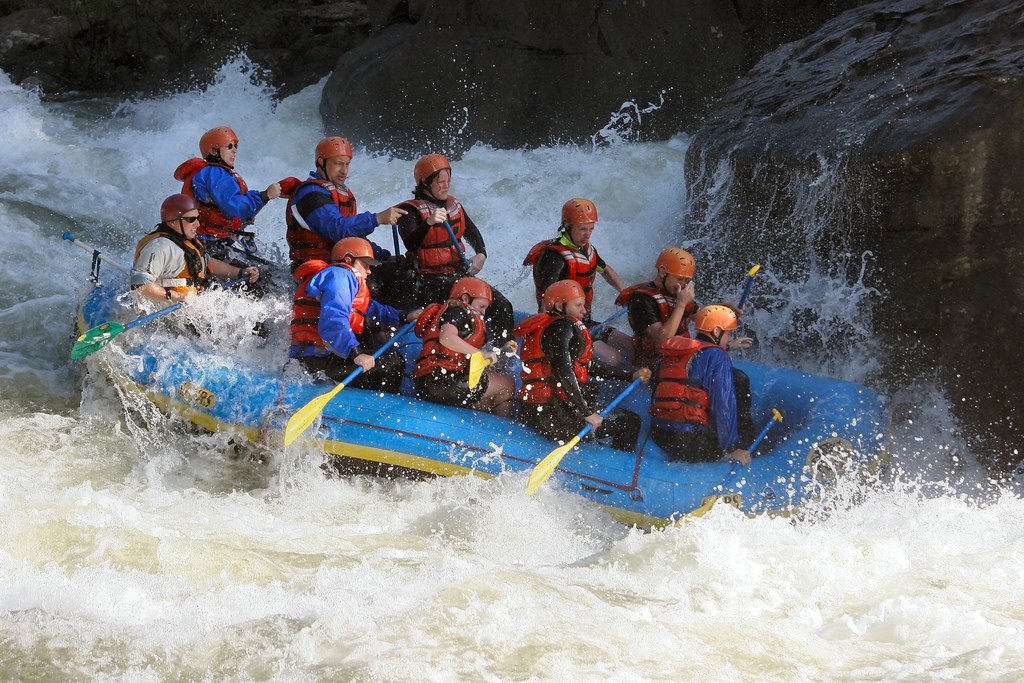
Costa Rica’s Pacuare River offers the perfect combination of exhilarating rapids and remarkable rainforest wildlife viewing opportunities. As rafters navigate Class III and IV rapids, they simultaneously pass through pristine jungle habitats where howler monkeys, toucans, sloths, and even the occasional jaguar can be spotted along the riverbanks. The river cuts through a biological corridor connecting several important ecosystems, making it a critical habitat for numerous endangered species. Multi-day rafting trips allow participants to stay in riverside eco-lodges where nighttime wildlife activity, including frogs, bats and nocturnal mammals, adds another dimension to the adventure. The Pacuare’s combination of biodiversity and challenging rapids has earned it recognition from National Geographic as one of the world’s top river trips.
Orca Kayaking in the San Juan Islands, Washington
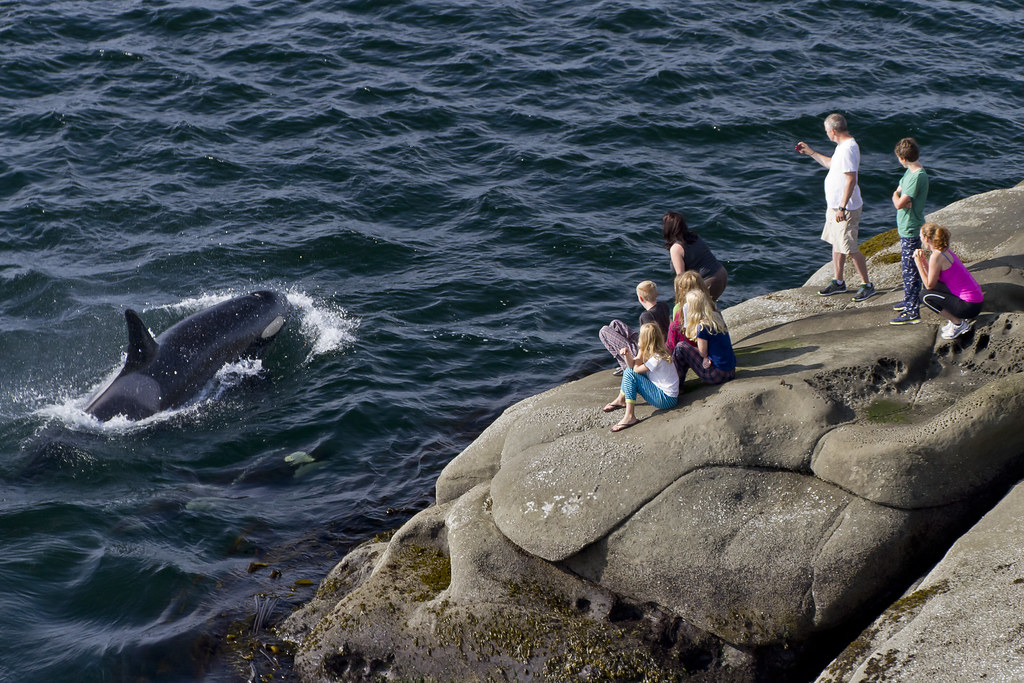
The sheltered waters of Washington’s San Juan Islands provide one of the world’s premier destinations for kayaking among orca whales. The resident J, K, and L pods frequent these waters primarily from May through September, feeding on the region’s abundant salmon runs. Kayakers often report the humbling experience of hearing orcas breathe through their blowholes before seeing their distinctive black-and-white markings cut through the water nearby. Professional guides emphasize respectful wildlife viewing protocols, maintaining appropriate distances and teaching paddlers about the complex social structures and conservation challenges facing these intelligent marine mammals. The islands’ protected inlets and diverse marine ecosystems also support harbor seals, porpoises, sea lions, and rich birdlife, creating a multifaceted wildlife experience.
The Everglades’ Mangrove Tunnels, Florida
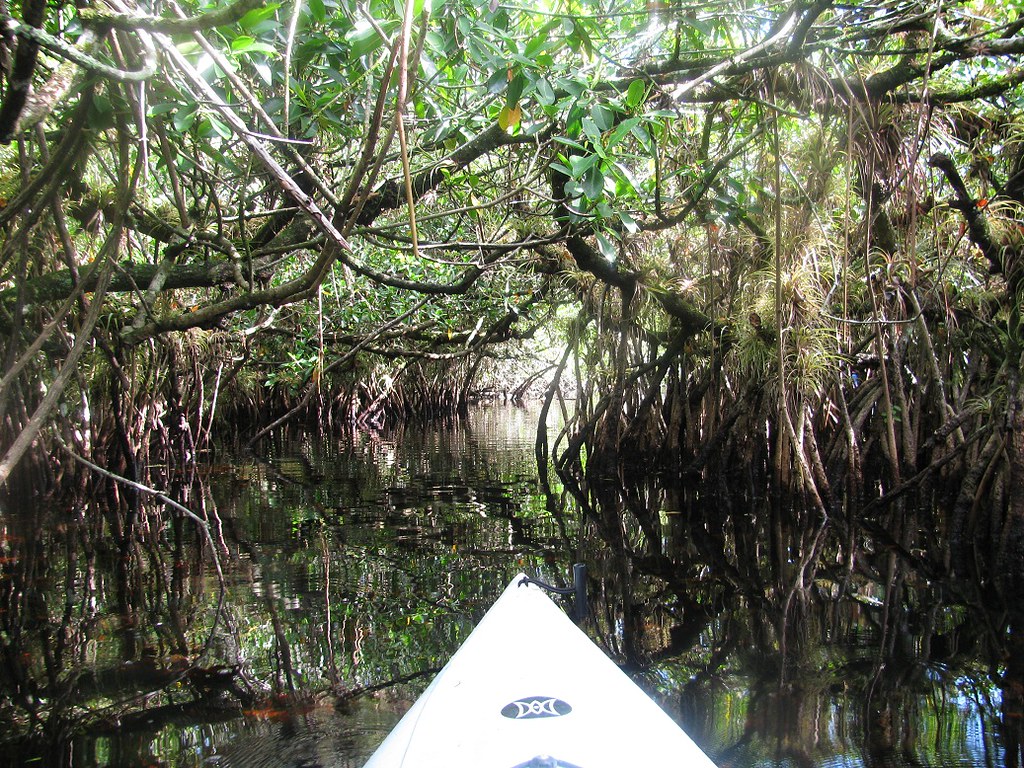
Florida’s Everglades National Park offers a distinctly different kayaking wildlife experience through its intricate mangrove tunnels and shallow wetlands. These protected waterways serve as nurseries for countless marine species and provide ideal viewing opportunities for American alligators, manatees, river otters, and an astonishing variety of wading birds. The park’s Ten Thousand Islands region features maze-like mangrove passages where paddlers can navigate through natural tunnels formed by the arching roots and branches of these unique coastal trees. Winter months (December through April) typically offer the most comfortable temperatures and lowest mosquito populations, along with increased chances of spotting manatees seeking warmer waters. Guided tours provide essential navigation assistance through the complex waterways while offering expert interpretation of the ecosystem’s delicate balance.
Salmon River White Water Adventures, Idaho
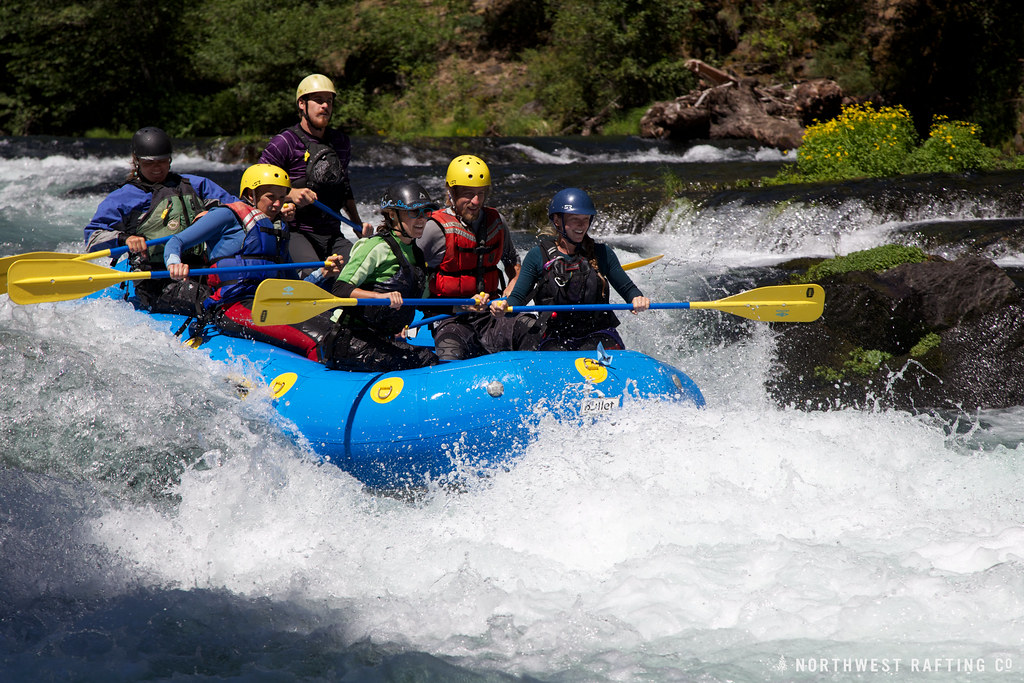
Idaho’s Salmon River, nicknamed “The River of No Return,” provides multi-day rafting expeditions through one of America’s most pristine wilderness corridors with remarkable wildlife viewing opportunities. Rafters regularly spot Rocky Mountain elk, bighorn sheep, black bears, and bald eagles along the rugged canyon shorelines. The river’s seasonal salmon runs create feeding opportunities for numerous predators, increasing wildlife activity near the water during migration periods. Deep in the Frank Church-River of No Return Wilderness, sections of the river flow through areas so remote they’re accessible only by boat, horseback or bush plane, preserving authentic wildlife encounters untainted by modern development. Multi-day trips feature camping on sandy beaches where nocturnal wildlife sightings and star-filled skies add to the wilderness experience.
Sea Kayaking with Whales in Baja California, Mexico
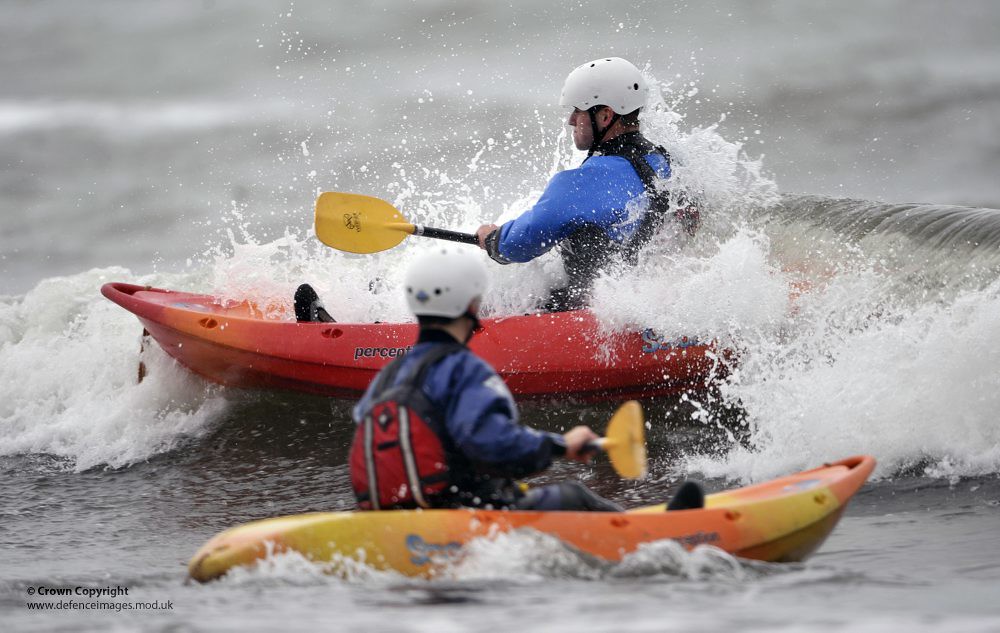
Baja California’s Sea of Cortez creates an unparalleled setting for close encounters with the gentle giants of the ocean. From January through March, gray whales use the protected lagoons along Baja’s Pacific coast as calving grounds, often approaching small boats with apparent curiosity. The Sea of Cortez side offers opportunities to paddle alongside enormous blue whales, playful humpbacks, and massive whale sharks, depending on the season. Multi-day kayak camping trips allow paddlers to follow whale migration routes while experiencing the desert-meets-sea landscape that makes this region ecologically unique. The clear turquoise waters provide excellent visibility for spotting marine life, including sea lions, dolphins, manta rays, and numerous tropical fish species.
Amazon River Basin Kayaking, Brazil and Peru
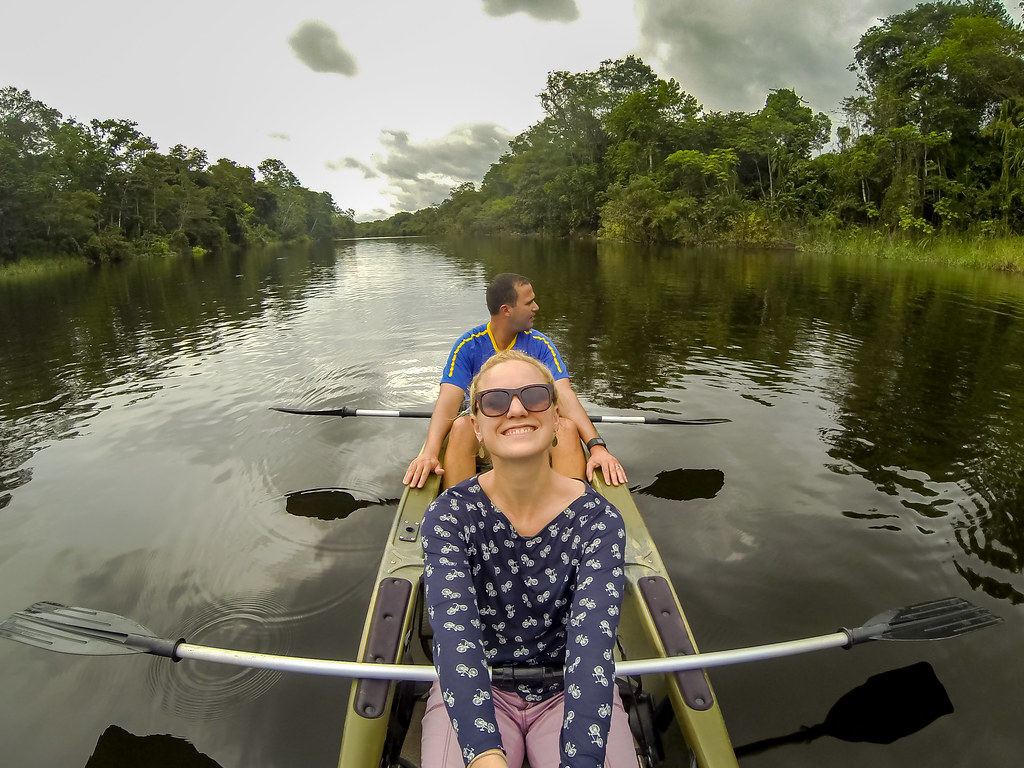
The Amazon River basin offers paddling experiences through the world’s most biodiverse ecosystem, where wildlife encounters occur at every turn. Kayakers navigate through flooded forests during high-water season, paddling among treetops while spotting monkeys, sloths, and exotic birds at eye level. The region’s pink river dolphins, locally known as botos, frequently approach kayaks with curious behavior, creating magical interactions with these rare freshwater mammals. Nighttime paddling excursions reveal a completely different ecosystem as nocturnal creatures become active and bioluminescent insects create natural light displays along shorelines. Specialized guides are essential not only for navigation but for spotting camouflaged wildlife like sloths, poison dart frogs, and the elusive jaguar that might otherwise go unnoticed.
Responsible Wildlife Viewing Practices
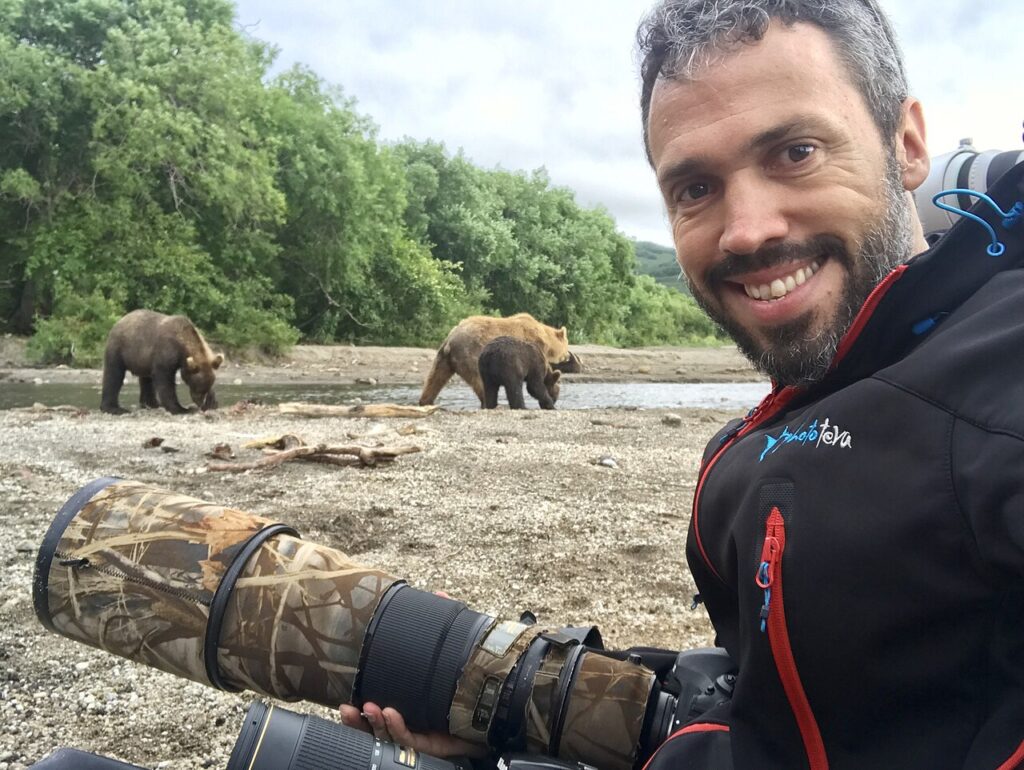
Ethical wildlife encounters require adherence to responsible viewing practices that prioritize animal welfare and habitat protection. The general rule for marine mammals involves maintaining a distance of at least 100 yards (the length of a football field) and never pursuing, encircling, or separating animals from their groups. Reputable tour operators follow wildlife viewing guidelines specific to each species and location, often exceeding minimum requirements to ensure minimal disturbance. Quiet paddling techniques, proper waste management, and avoiding sensitive breeding areas demonstrate respect for wildlife and their environments. Understanding animal behavior signs of stress or disturbance allows paddlers to adjust their presence accordingly, remembering that we are visitors in their natural homes.
Essential Gear for Wildlife Water Adventures
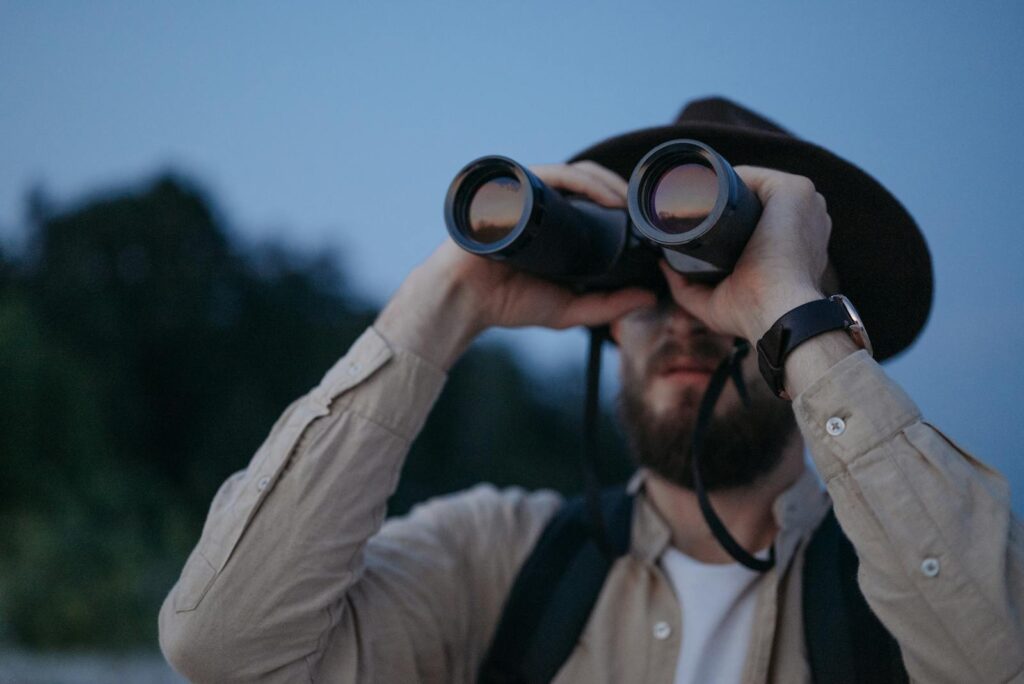
Successful wildlife viewing expeditions require specialized equipment beyond basic paddling gear. Quality waterproof binoculars with floating straps allow for detailed wildlife observation without approaching too closely, while waterproof cameras with zoom capabilities capture memories without disturbing natural behaviors. Quick-dry clothing with UV protection shields against sun exposure during long days on reflective water surfaces. Polarized sunglasses cut glare and enhance visibility below the water surface, making it easier to spot marine creatures swimming beneath your vessel. Field guides specific to regional wildlife help identify species and understand their behaviors, enhancing the educational value of each sighting.
Planning Your Wildlife Paddling Adventure
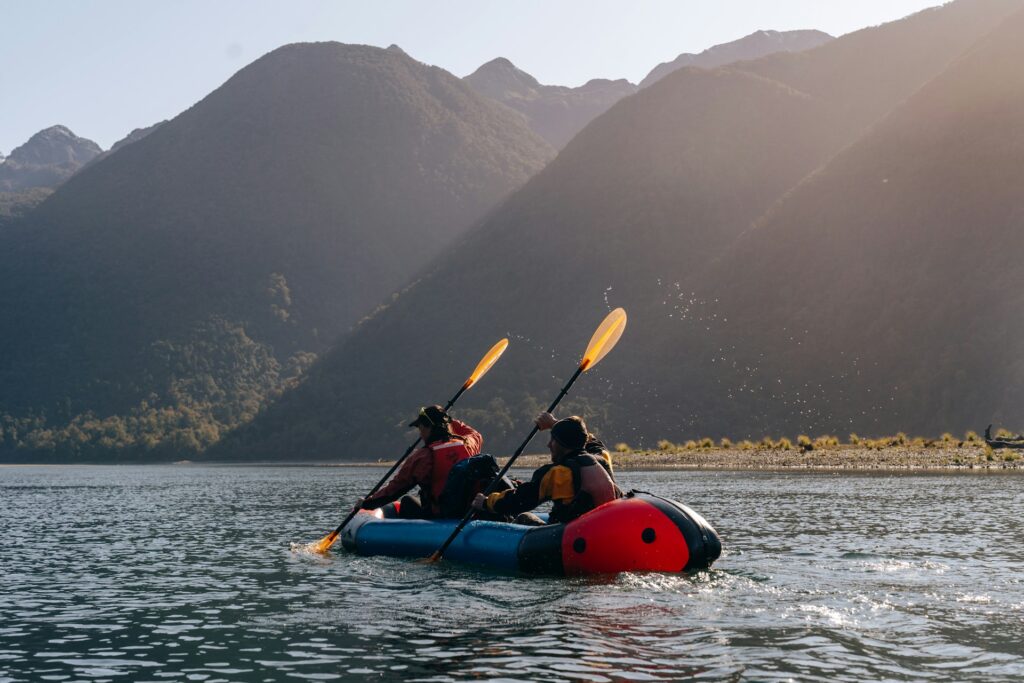
Creating a successful wildlife water adventure requires careful planning around seasonal animal movements and environmental conditions. Research destinations based on target species’ peak seasons, understanding that wildlife viewing always involves probability rather than guarantees. Consider physical fitness requirements honestly, as some destinations involve challenging paddling conditions that require previous experience. Support conservation by choosing tour operators with strong environmental commitments, verifiable eco-credentials, and involvement in local conservation initiatives. Allow flexibility in itineraries when possible, as extra days in a location increase chances of meaningful wildlife encounters and provide buffer days for weather changes.
Conservation Through Ecotourism
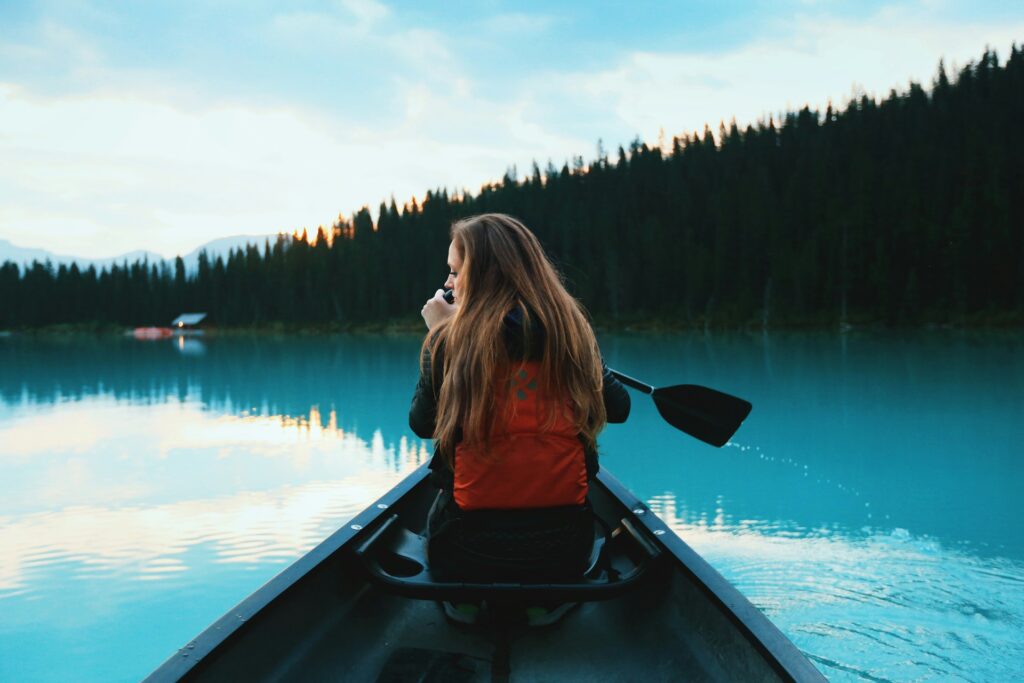
Wildlife paddling adventures represent ecotourism at its finest, creating economic incentives for habitat protection while fostering conservation awareness among participants. Communities that once relied on extractive industries like logging or fishing increasingly turn to wildlife tourism as a sustainable alternative that preserves natural resources while providing livelihoods. Many tour operators directly support conservation through financial contributions to protected areas, participation in scientific research, and educational programs for local communities. The transformative nature of close wildlife encounters often inspires travelers to become conservation advocates long after their adventures end, creating ripple effects that extend far beyond the initial experience. By choosing responsible operators and practicing ethical wildlife viewing, paddlers become part of the solution to environmental challenges facing aquatic ecosystems worldwide.
Whether you’re gliding alongside curious dolphins in crystal-clear bays or navigating thrilling rapids while spotting wildlife along pristine riverbanks, water-based wildlife adventures offer unparalleled connections to the natural world. These experiences combine the meditative aspects of paddling with the excitement of wildlife encounters, creating the perfect balance of adventure and nature appreciation. As pressures on wild places continue to increase, responsible wildlife tourism provides crucial support for conservation efforts while creating advocates who understand the value of protecting these irreplaceable ecosystems. The memories created during these unique adventures—of locking eyes with a wild dolphin or watching an eagle soar above river rapids—often become defining moments that deepen our connection to the natural world and inspire ongoing environmental stewardship.

